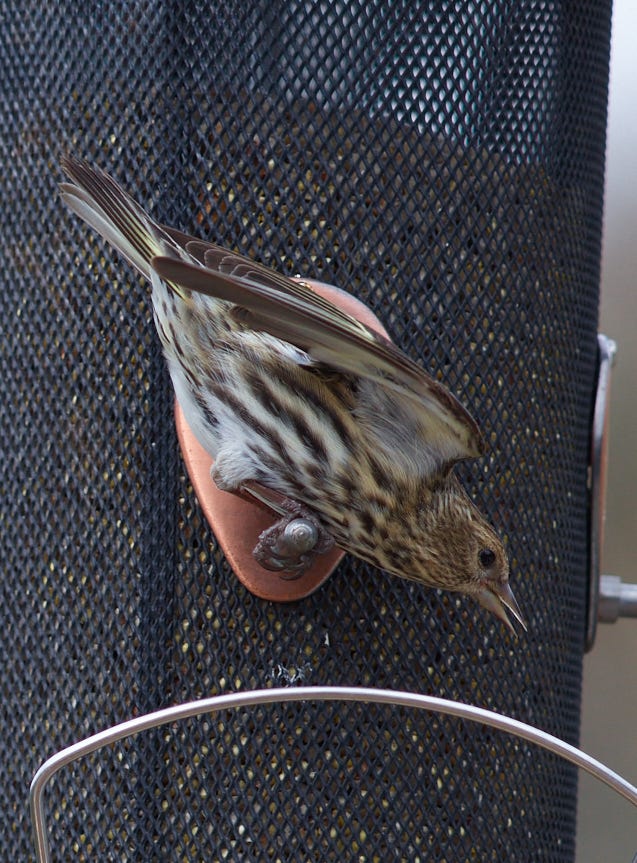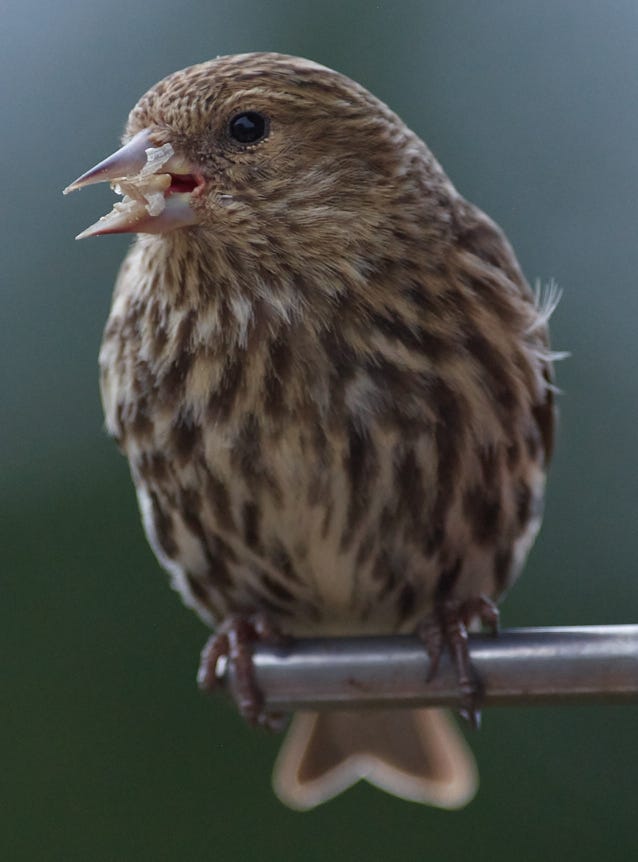Standing at a reasonable distance from the bird feeder, around five feet, this is what I can get with the 150mm lens and extender (the combination is 300mm). Any closer, and the birds leave. Image details: ISO 800 (to allow a faster shutter speed to freeze movement; birds are fast), 1/1000th second exposure, and f/8 (to get better depth of field, you ‘stop down’ a lens).
For me, this is a nice image but the details on the bird are not as clearly seen as I would like.
Standing roughly in the same location, I get a much clearer look at the details on the bird in the full-frame view. The shot is of course a lot tighter; if there are other interesting things going on elsewhere around the feeder, I can’t include them. (I could use the 240mm without the extender and get a decent all-around view, of course, but then I lose the details that are so clearly seen here.
Image details: ISO 800, 1/2000th second exposure, f/9 (that is the minimum aperture on this setup; it was f/5.6 for the faster 150mm lens with extender).
This image just has more details that are visible. Is it ‘better?’ As noted above, sometimes you want to zoom in, and sometimes you don’t.
Now, let’s look at the important part of these images, the birds, at 100% view. (The full-frame shots above are much smaller than they could be, but I can only go so large on a web page.)
At actual size, the pine siskin’s details are clearer, but we can’t zoom in any further than this. This is the maximum enlargement, and if it’s details you want, this is as much as you can get with this setup. It’s really nice, don’t get me wrong, but my lust for details knows no boundaries. :) The good news is that the depth of field is pretty good, all or nearly all of the bird is in crisp focus.
At 480mm (240mm and 2X extender), there are a few changes. The details are much more present, and to my eye, that also gives the bird more of a 3D appearance (although that could also be lighting and luck, but based on experience, details help create a good sense of a 3D object in a 2D photo).
At the same time, the depth of field is noticeably less. The beak area is in perfect focus, and some of the head as well. But the eye socket is just slightly out of focus, and the body is very out of focus.
So each image has strengths; each image has weaknesses.
There is no perfect solution. The 240m + extender delivers on detail, but only in a very narrow range of depth. It is also very challenging to focus; if I had been able, I would have focused on the eye—but birds move fast, you have to do your best and then grab the shot.
The 150mm + extender is not as detailed, but has greater depth of focus and a wider view that could include, say, another bird flying into the frame.
I still haven’t made my choice: one, the other, or both.






